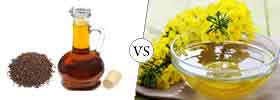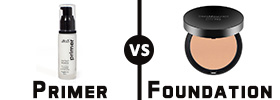Difference between Whiskey and Brandy
Key Difference: Whiskey or whisky is a type of distilled alcoholic beverage made from any form of fermented grain mash. Depending on the geographical region or type of whiskey that is being made, whiskey can be made from barley, malted barley, rye, malted rye, wheat, and corn. Brandy, short for brandywine is a sprit that is distilled from wine, grapes and other fruit juices. The word ‘brandywine’ is derived from the Dutch word ‘brandewijn’ meaning “burnt wine”. Brandies are more commonly considered as an after-dinner drink and can contain alcohol by volume (ABV) between 35% and 60%.
Brandy and whiskey are two completely different drinks and to categorize them as the same would be injustice. They are two different kinds of drinks, with different flavors, taste, process, etc. People that abstain from drinking would consider any type of drink as just an alcoholic beverage, but fine drinkers would argue that each drink has a distinct different taste, aroma, flavor, etc. To them, each drink is special in its own sense. Whiskey and Brandy even differ in the ingredients that are used to process them.
 Whiskey or whisky is a type of distilled alcoholic beverage made from any form of fermented grain mash. Depending on the geographical region or type of whiskey that is being made, whiskey can be made from barley, malted barley, rye, malted rye, wheat, and corn. They are often aged in charred barrels. According to Wikipedia, the word ‘whiskey’ is the anglicisation of the Gaelic word ‘uisce|uisge’ meaning “water”. Distilled water was known in Latin as aqua vitae meaning “water of life”. The process of distillation can be dated back to the Greeks in Alexandria around the 3rd century AD; however they did not distill alcohol only spirits for fragrance purposes. The distillation process was passed down through the ages to Italy in the 13th century AD where the first distillation process of alcohol took place and alcohol was distilled from wine. The alcohol was originally used for medicinal purposes before it become consumable as a beverage. Whiskey first become popular as a beverage in Scotland before it spread to other neighboring countries.
Whiskey or whisky is a type of distilled alcoholic beverage made from any form of fermented grain mash. Depending on the geographical region or type of whiskey that is being made, whiskey can be made from barley, malted barley, rye, malted rye, wheat, and corn. They are often aged in charred barrels. According to Wikipedia, the word ‘whiskey’ is the anglicisation of the Gaelic word ‘uisce|uisge’ meaning “water”. Distilled water was known in Latin as aqua vitae meaning “water of life”. The process of distillation can be dated back to the Greeks in Alexandria around the 3rd century AD; however they did not distill alcohol only spirits for fragrance purposes. The distillation process was passed down through the ages to Italy in the 13th century AD where the first distillation process of alcohol took place and alcohol was distilled from wine. The alcohol was originally used for medicinal purposes before it become consumable as a beverage. Whiskey first become popular as a beverage in Scotland before it spread to other neighboring countries.
There are various different types of whiskey and they differ in terms of base product, alcoholic content and quality. The main two types include malt whisky and grain whisky. Malt whisky is made primarily from malted barley, while grain whisky is made from any type of grain. Malting is when the grain is put under the process of germination. Germination requires the barley being placed in water for a certain amount of time and being constantly turned to ensure proper soaking. Whiskies can further be classified under:
- Single malt whisky: is whisky that is from a single distillery and is made from a mash that uses only one particular type of malted grain.
- Blended malt whisky: is a blend of different malt whiskies from different distilleries.
- Blended whiskies: is whiskey that is made from a mixture of malt and grain whiskies along with neutral spirits, caramel, and flavoring.
- Cask strength: These whiskies are bottled directly from the cask and are undiluted or only a little diluted. These are rare whiskies.
- Single cask: Each bottle of a single barrel whiskey is from an individual cask with the cask number labeled on the bottle.
Whiskies must be strengthened and aged in a barrel. They do not mature in the bottle, hence if a person keeps the whiskey bottle over a long time, it would not become any stronger in flavor or alcohol content. The alcohol content and mash content varies depending on the regulations of the geographic region. The whiskies require a charred oak barrel during the aging process, which provides them with the golden brown and amber coloring. Additional flavors and colors can be added to the alcohol depending on the regulations.
 Brandy, short for brandywine is a sprit that is distilled from wine, grapes and other fruit juices. The word ‘brandywine’ is derived from the Dutch word ‘brandewijn’ meaning “burnt wine”. Brandies are more commonly considered as an after-dinner drink and can contain alcohol by volume (ABV) between 35% and 60%. The origins of brandy can be dated back to the development of distillation to ancient Greece and Rome. However, modern brandy can be dated back to the 12th century. Brandies are made using grapes or any fruits that can produce a sugary juice. According to Encyclopaedia Britannica, brandy can also be used to refer to spirit made from pomace and other fermented fruit. However, if the brandy is made from any other fruit instead of grapes, many countries require it to be labeled as ‘fruit brandy’, ‘fruit spirit’, or the name of the fruit should be mentioned on the bottle. The regulations for producing and labeling differ depending on the jurisdiction.
Brandy, short for brandywine is a sprit that is distilled from wine, grapes and other fruit juices. The word ‘brandywine’ is derived from the Dutch word ‘brandewijn’ meaning “burnt wine”. Brandies are more commonly considered as an after-dinner drink and can contain alcohol by volume (ABV) between 35% and 60%. The origins of brandy can be dated back to the development of distillation to ancient Greece and Rome. However, modern brandy can be dated back to the 12th century. Brandies are made using grapes or any fruits that can produce a sugary juice. According to Encyclopaedia Britannica, brandy can also be used to refer to spirit made from pomace and other fermented fruit. However, if the brandy is made from any other fruit instead of grapes, many countries require it to be labeled as ‘fruit brandy’, ‘fruit spirit’, or the name of the fruit should be mentioned on the bottle. The regulations for producing and labeling differ depending on the jurisdiction.
The process of producing brandy requires fermenting the wine, fruit juice or grapes for 4-5 days after which they are distilled, using either pot-stills or column-still, before they are put into casks for aging. There is no set time required for aging as some fruit juices do not require aging. The aging process determines the color of the brandy; if it is not aged the brandy is colorless or clear and the longer it is aged the stronger the color of the brandy. Some brandy may also be added with caramel to adjust the color and the flavor of the beverage. Distillation must differ depending on the type of brandy being produced. For example, wine with ABV 8% to 12% and high acidity is boiled in a pot still. Brandy made from grapes also requires being distilled twice or more to acquire the required aroma and flavor.
Brandy is labeled in a certain way that shows the quality of the brandy. Labels include A.C. (aged 2 years), V.S. (very special, aged 3 years), V.S.O.P. (Very Superior Old Pale, aged at least 5 years), X.O. (Extra Old, aged at least 6 years), Vintage (the label shows the date it was placed into the cask) and Hors d'age (Too old to determine age, commonly more than 10 years). Other names for brandy include cognac and Armagnac, named after the place they were produced.
Image Courtesy: adventuresnw.net, kanyetothe.com









Add new comment